8.8 Million Trees Planted in California for Forest Fire Restoration Since 2018

Get news, updates, & event Info delivered right to your inbox:
Planting Trees, Restoring Wildfire Damaged Ecosystems Across California
Situated between deep ocean and high mountains, most of the state of California falls within the California Floristic Province, a global biodiversity hotspot. Thanks to unique landscapes that occur in a variety of climate types, it's home to iconic biodiversity such as the gray wolf, mountain lion, california condor, and bighorn sheep — and endangered trees like the giant sequoia and coastal redwood.
Historic threats — including floods, droughts and wildfires — which are compounded by diseases, insect infestations, and many other challenges, mean the state has profound restoration needs. As of 2023, nearly 1.5 million acres of land in California required reforestation from wildfires alone — and 2/3 of that land is in National Forests. At that time, the Pacific Southwest Region of the U.S. Department of Agriculture, Forest Service, projected it would take 14 years to grow enough trees to meet the state’s restoration needs. And with more fires occurring every year, the demand for tree planting is only increasing.
As wildfire severity has increased, our forest fire recovery efforts have increased right alongside it. Working with big partners like the U.S. Department of Agriculture, Forest Service and CALFIRE, and smaller ones like local Resource Conservation Districts and private landowners across the Golden State, we are committed to restoring California’s irreplaceable ecosystems. Since 2018, we've planted 8,842,423 trees through 80 projects to restore 19,366 hectares (47,854 acres) of land.
California Forest Fire Recovery: Six of the Projects That Have Planted Trees for Wildfire Restoration
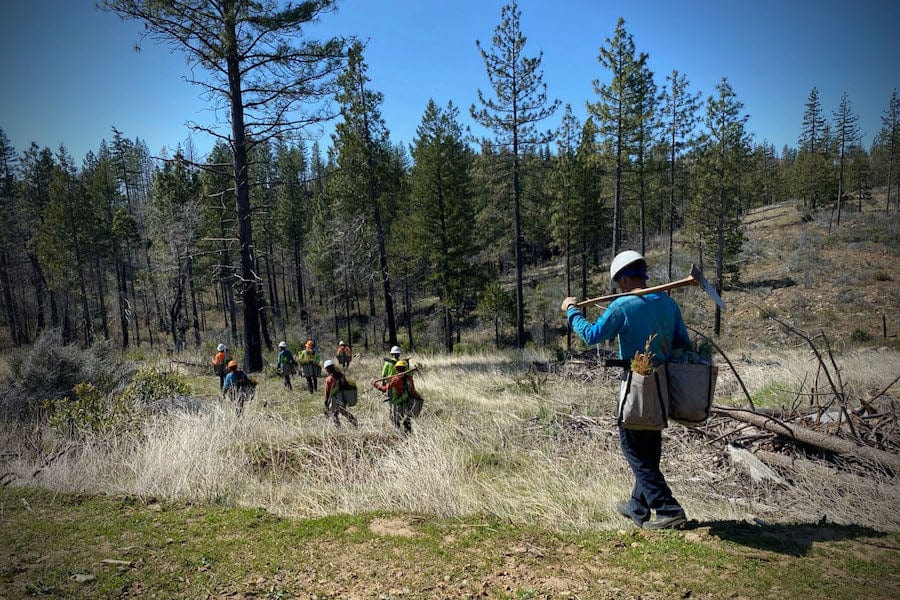
1. Camp Fire Restoration in Northern California
Native, fire-resistant conifer seedlings were planted to restore land within the 2018 Camp Fire burn scar. Due to the severity of the fire, the native ecosystem would not have regenerated on its own.
The trees that have been planted will restore this fire damaged landscape by supporting native biodiversity, improving air quality, improving water quality in an important community watershed, and encouraging the return of healthy forest cover.
As a result of the ecological benefits they provide, the new trees will increase property values in the Paradise, CA area, which was ecologically and economically devastated by the Camp Fire — one of the most destructive in California's history. In addition to long-term benefits, this project provided local economic stimulus through the influx of planting crews who participated in the restoration work.
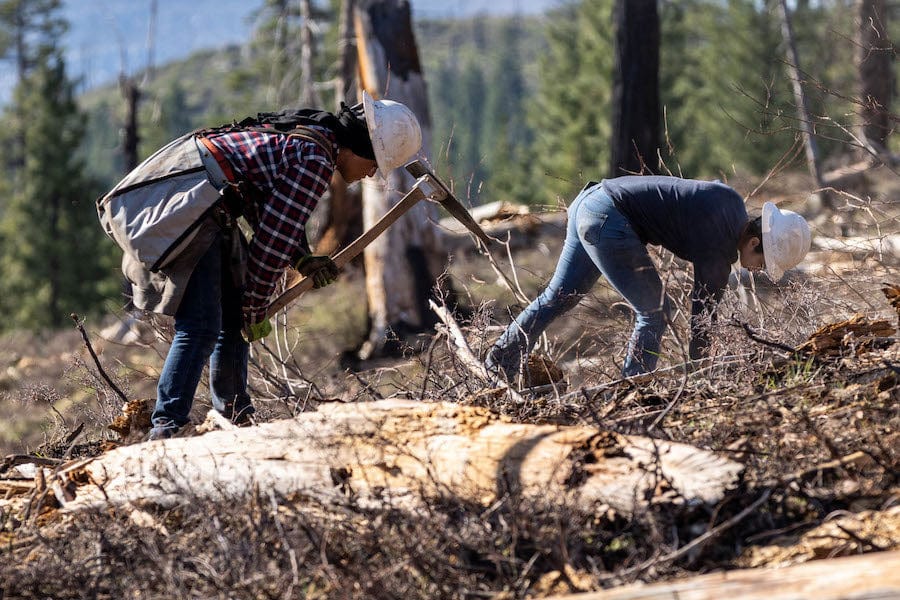
2. Moonlight Fire Restoration
As part of a multi-year initiative, Ponderosa Pine, Jeffery Pine, Sugar Pine, Incense Cedar and Douglas Fir seedlings were planted to restore land within Plumas National Forest. This land was severely damaged by the 2007 Moonlight Fire — which burned over 60,000 acres of the National Forest — and would not have regenerated on its own.
As the seedlings gradually grow into mature trees, they will benefit the local economy and culture (including Native American communities in the region), safeguard a critical watershed that provides water to thousands of farmers and millions of Californians, and more.
Plumas National Forest is home to six threatened and endangered species, including the California red-legged frog, Sierra Nevada yellow-legged frog, gray wolf, Quino checkerspot butterfly, valley elderberry and the native longhorn beetle. Once the forest is restored, it will be able to provide habitat once again for its unique native biodiversity.
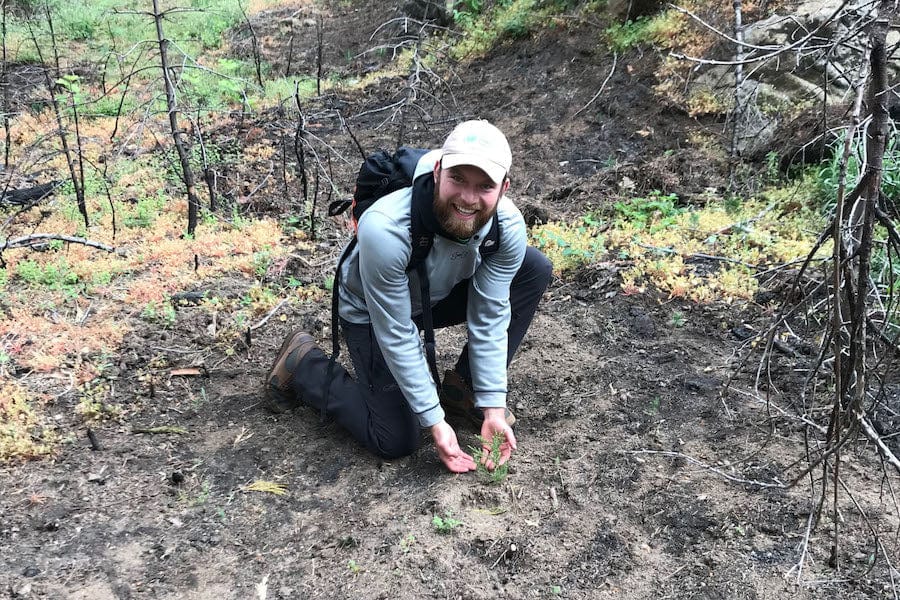
3. Yosemite Valley Restoration
Native seedlings were planted as part of a larger project that planted trees across Yosemite West, California.The trees were planted in the Ferguson Fire burn scar, which degraded a significant area of land during the late summer of 2018.
Due to the severity of the fire, it's unlikely the land would have been able to regenerate on its own. Everything from the species chosen to the spacing of the planting was carefully planned to help reduce the risk of future fires. Planting native, fire-resistant tree species including Lodgepole Pine, Sugar Pine and Giant Sequoia is important, as these species have evolved to withstand natural fires. Spacing the trees far apart also reduces future fire risk.
Surrounded by Yosemite National Park and the Sierra National Forest, maintaining this land in a fire-safe manner is critical for protecting the region and community. As the trees grow along the steep slopes of this region, they will reduce erosion and protect downslope areas from landslides, flooding and earth flow. This erosion reduction will also protect several watercourses and springs that are important to health of the community and National Park.
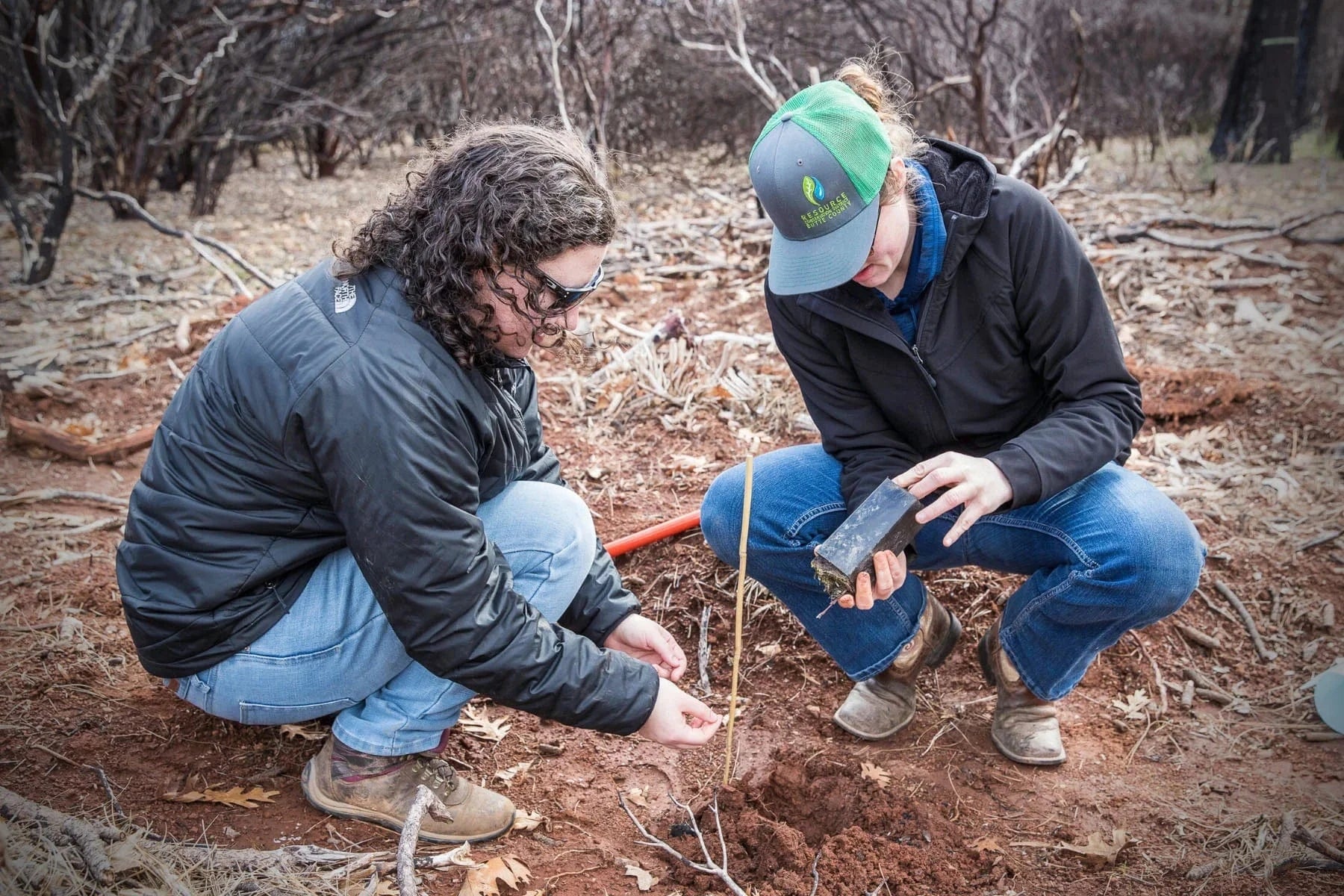
4. RCD Restoration Project
Ponderosa pine, Red fir, Douglas-fir, White fir, Sugar pine, Coulter pine, Jeffrey pine and Giant sequoia seedlings were planted across Calaveras, El Dorado, Fresno, Kern, Madera, Mariposa, Placer, San Diego, and Tuolumne Counties. All of these areas have experienced significant tree loss due to wildfires and other climate change impacts like invasive insects (bark beetles).
Tree seedlings were distributed to affected landowners to help them re-establish healthy forests on their land. Thanks to our partnership, many who might normally struggle to pay for the cost of seedlings were able to receive them. Projects like this are especially important because they help us reach private landowners that may not otherwise have access to reforestation opportunities — thus increasing habitat connectivity for native biodiversity, reducing future wildfire risk across the landscape, and improving overall ecosystem health.
In addition to the community benefits, many varieties of birds, reptiles, mammals and insects will benefit from reforestation efforts. Reforestation in these areas also prevents erosion, and helps improve water quality.
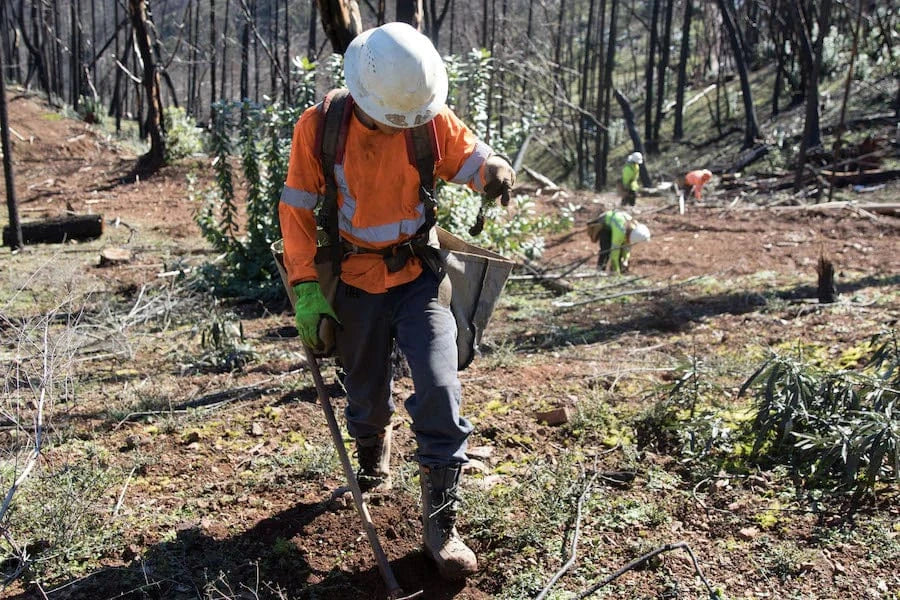
5. Redwood Complex Fire Restoration
Douglas Fir seedlings were planted in Mendocino County's Potter Valley to restore land damaged in the 2017 Redwood Complex Fire, which burned over 36,000 acres in Redwood and Potter Valleys. The vegetation in this area ranges from grassland to oak woodlands to native conifer forest. The fire, driven by extremely high wind speeds, burned with high severity, particularly in the native conifer stands. Due to the high severity of the fire, few conifers survived to set seed for a new generation of Douglas-fir.
This project will help the burned stand recover by replanting native Douglas-fir to replace what was lost. The growing trees will help increase the soil stability of the steep, charred slope by increasing forest cover and reintroducing a rooting network. By maintaining conifers in the landscape, the project will restore habitat diversity to better support a wide array of species.
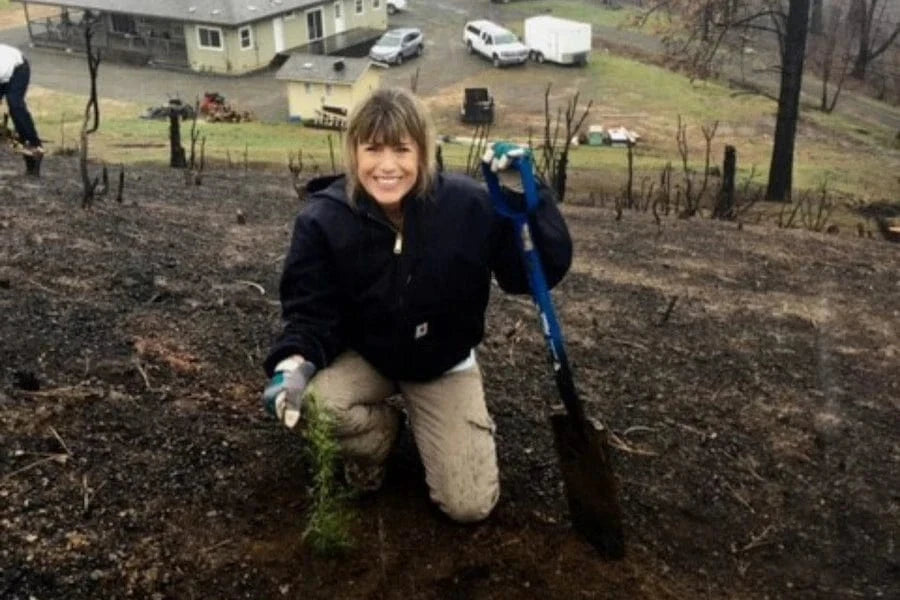
6. Kinkade Reforestation
Ponderosa Pine and Douglas Fir seedlings were planted in the Pine Flat area of Sonoma County to restore land that had been impacted by intense wildfire multiple times. Before planting, the land was at high risk of conversion from mixed conifer/grass woodland to dense chaparral. Due to this, the native conifer forest would not have been able to regenerate on its own.
This project will bring back a historic stand of conifer that was lost to the fires. Re-establishing the stand brought a sense of community as local volunteers worked together to improve the landscape.
In addition to community benefits, the growing trees will increase soil stability on a hill that is at risk for land slides, sequester carbon, reduce the risk of future fires and benefit several bird species and small mammals that rely on healthy conifer forest habitat.
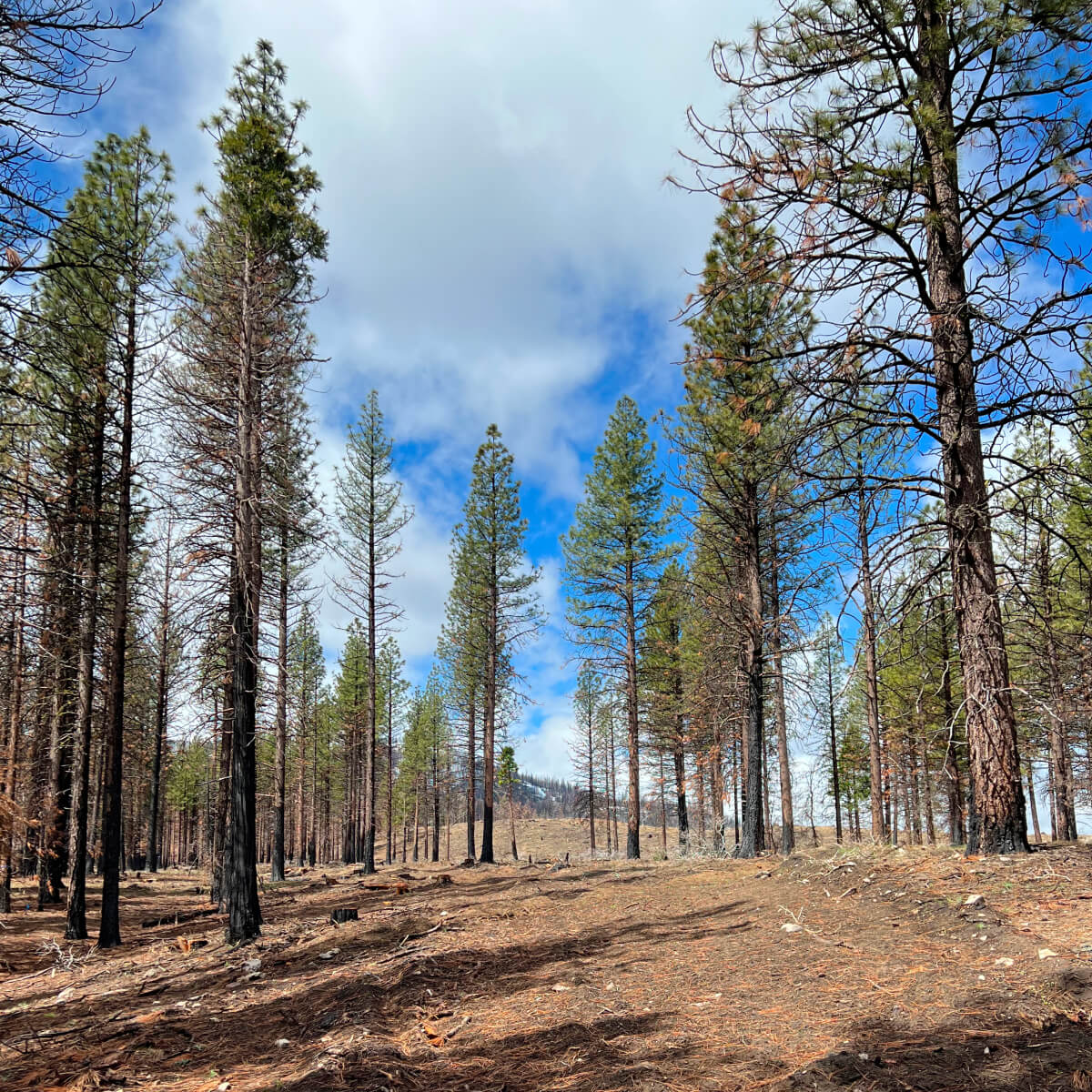
Ready to Take Action for Forest Fire Recovery? Here's How You Can Help
Today, the greatest threat to California’s forests is catastrophic events such as high severity wildfires — as well as land use conversion for agricultural and residential use. Thanks to several compounding challenges, fires are burning longer and more intensely than ever before, testing the ability of ecosystems to regenerate without human intervention.
California forests experience profound stressors, including intensifying heat and drought; two statewide drought emergencies have been declared in the last 20 years alone. Combined with other compounding factors, this makes them more vulnerable to persistent degradation from evolving threats, including disease and insects — which then increase the risk of high-severity wildfires.
By planting trees once forests are ready to recover, we’re able to give nature a leg — and a root — up. Want to join us? Plant trees for Forest Fire Recovery today!
Get news, updates, & event Info delivered right to your inbox:
Related Posts
9 Sustainable New Years Resolutions
18/12/2025 by Meaghan Weeden
Inspirational Quotes About Trees
16/12/2025 by Meaghan Weeden
The 9 Oldest, Tallest, and Biggest Trees in the World
11/12/2025 by One Tree Planted
Popular On One Tree Planted
Inspirational Quotes About Trees
16/12/2025 by Meaghan Weeden
The 9 Oldest, Tallest, and Biggest Trees in the World
11/12/2025 by One Tree Planted
What Causes Deforestation?
10/07/2025 by Meaghan Weeden
Fundraising Disclosures

Be Part of the
Restoration Movement
The Grove is more than just a monthly giving program: it's a vibrant community of individuals who are dedicated to reforestation and environmental restoration on a global scale.
As a member of The Grove, you affirm your commitment to restoring forests, nurturing biodiversity, and fostering positive global change.



